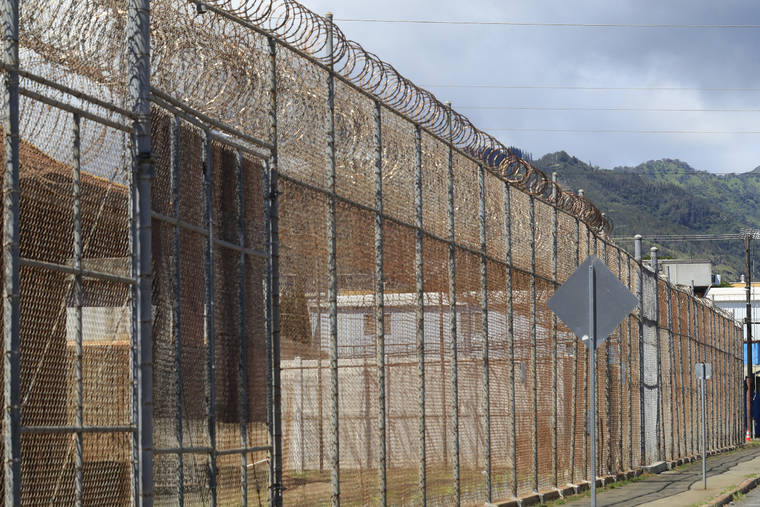There could be profound implications to redeveloping the current site of the Oahu Community Correctional Center if the city’s troubled rail project has to stop short of its goal of reaching Ala Moana Center, even if rail construction only temporarily stops in Kalihi.
Lawmakers and community leaders have long dreamed of redeveloping the 16-acre OCCC site into any number of possibilities and combinations,
including a mix of open space, retail and housing.
The current jail, bordered by Dillingham Boulevard and Puuhale Road between two proposed rail stops, has to be relocated first. The current preferred location would be on 30 acres of state land where the Animal Quarantine Station now sits in Halawa. The animal quarantine operation would move to a smaller footprint on the same parcel to make way for a new jail.
But last week’s announcement by the head of the Honolulu Authority for Rapid Transportation that rail may have to be built in phases could have profound effects for OCCC’s Kalihi site if the jail is rebuilt in Halawa.
Two lawmakers who represent the area have vastly different perspectives on the effects of rail temporarily ending in
Kalihi.
Councilman Joey Manahan believes it could stimulate the area and encourage redevelopment if OCCC moves out.
“It could become more of a destination with new development there, with retail and housing and other projects,” Manahan said. Kalihi “would become much more significant.”
Overall, Manahan supports building rail all the way to Ala Moana, Hawaii’s busiest transportation hub, in part, to honor the city’s funding agreement with the Federal Transit Administration and preserve federal
funding.
“We may have to build it in phases, but we definitely need to get it all the way to Ala Moana to fulfill the full faith agreement,” Manahan said. “But if it ends up going to Middle Street, it (Kalihi) would become more of a destination.”
But state Rep. John Mizuno
(D, Kamehameha Heights-Kalihi Valley) worries that even a temporary end-of-the-line in Kalihi would deter interest in redeveloping the OCCC site because of the uncertainty.
“It would definitely hurt,” Mizuno said. “If it (rail) is all of a sudden on hold, that changes the whole economic picture without predictability or probability for years. It could actually have an adverse effect.”
Kalihi would not see an influx of passengers traveling ewa from Ala Moana, Mizuno said, and
Kalihi residents would have no rail option to get to jobs, schools and other transportation closer to Waikiki.
Kalihi Valley Neighborhood Board member Ethan Dayton
believes that ending rail in Kalihi — even temporarily — would not help spur redevelopment of the OCCC site.
“It’s going to be no difference,” he said.
On Wednesday, HART CEO and Executive Director Andrew Robbins told the City Council that HART’s latest problems mean his staff is looking at building the remaining rail segments in phases, along with options that include stopping short of Ala Moana.
Much work and community
input have to be provided before future use of OCCC’s current site can be determined, and the same is true for the state in deciding on final plans to break ground on a new jail in Halawa.
But before Robbins’ announcement to the City Council last week, Gov. David Ige previously told the Honolulu Star-Advertiser the current site of OCCC holds great potential for the people of Kalihi, including “good-paying jobs.”
There are many ideas about what to do with the current jail site if it closes.
In general, Ige said, what could emerge holds the promise to
provide “a tremendous shot in the arm for the community,” including the possibility of more affordable housing in the urban core.
“We hear their challenges and want to make an effort to re-imagine what Kalihi could be,” he told the Star-Advertiser.

